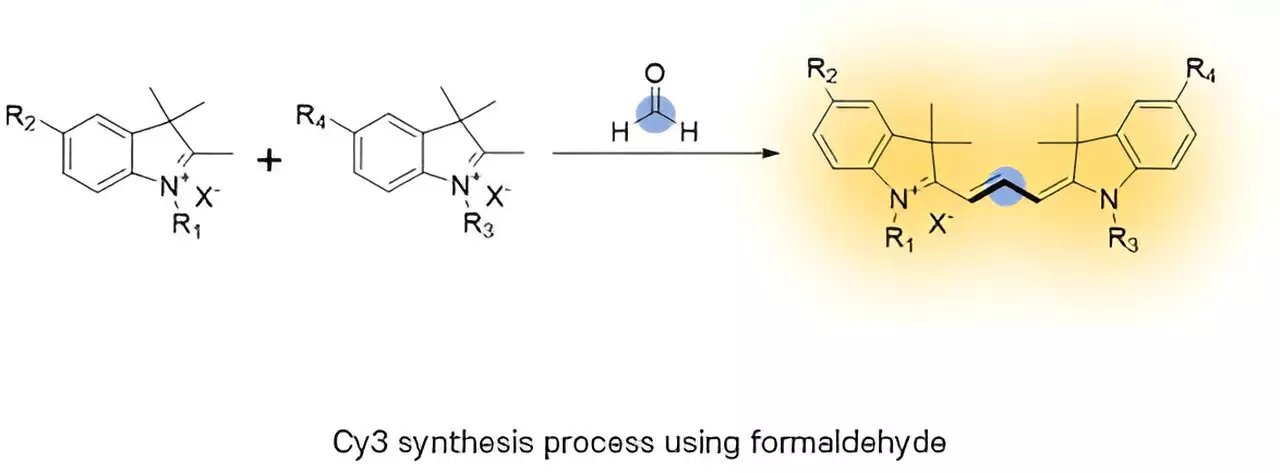Organic fluorophores are luminescent compounds that absorb and re-emit light at specific wavelengths, playing a crucial role in various scientific fields, particularly in medical diagnostics and bioimaging. These compounds aid in processes like cancer cell visualization and intricate genetic studies. Recent advancements highlighted in a groundbreaking study led by a research team from POSTECH have introduced a novel method for synthesizing these essential molecules, promising significant reductions in cost and environmental impact.
The synthesis of established organic fluorophores, notably trimethine cyanine (Cy3), has typically been burdened by its complex manufacturing processes. Traditional methods generally involve high molecular weight compounds, leading to excessive byproducts and low atom economy. Such inefficiencies not only drive up production costs but also contribute negatively to waste generation in chemical synthesis. To combat these challenges, researchers have long sought more streamlined and environmentally friendly alternatives.
The recent study published in Angewandte Chemie International Edition showcases an innovative approach that leverages formaldehyde—one of the simplest organic compounds. Comprising one carbon atom, two hydrogen atoms, and one oxygen atom, formaldehyde is often associated with toxicity, especially in biological systems where it can react detrimentally with proteins and DNA. However, this study harnessed its potential as a crucial building block in the synthesis of Cy3, thereby reducing the overall molecular weight and enhancing atom efficiency in the process.
By substituting cumbersome traditional compounds with formaldehyde, the researchers streamlined the synthesis from a multi-step process into a more efficient one-pot reaction. This approach not only simplified the production but also minimized waste and potential environmental impact.
In addition to in vitro applications, the research team extended their investigation to living systems and assessed the feasibility of applying their synthesis technique within biological contexts. In experiments involving rat small intestine tissue, they discovered a notable decrease in fluorescence signals in tissues under inflammatory conditions. This reduction was ascribed to diminished levels of formaldehyde during inflammation, suggesting that the newly synthesized Cy3 molecules could be significantly influenced by biological changes.
The adaptability of the method for real-world applications in living organisms indicates its potential utility in comprehensive biomedical research, where close observation of varied biological states is essential.
The successful synthesis of Cy3 with formaldehyde represents a significant advancement in organic chemistry and biomedicine. Not only does it pave the way for more cost-effective production of essential fluorescence molecules, but it also opens doors for further exploration into their role in biological processes. As technology advances, the implications of this research may expand, leading to improved diagnostics, enhanced imaging techniques, and broader applications in medicine and beyond. With leaders like Professor Young-Tae Chang and Dr. Sun Hyeok Lee actively pursuing innovative research, the future of organic fluorophores appears brighter than ever.


Leave a Reply